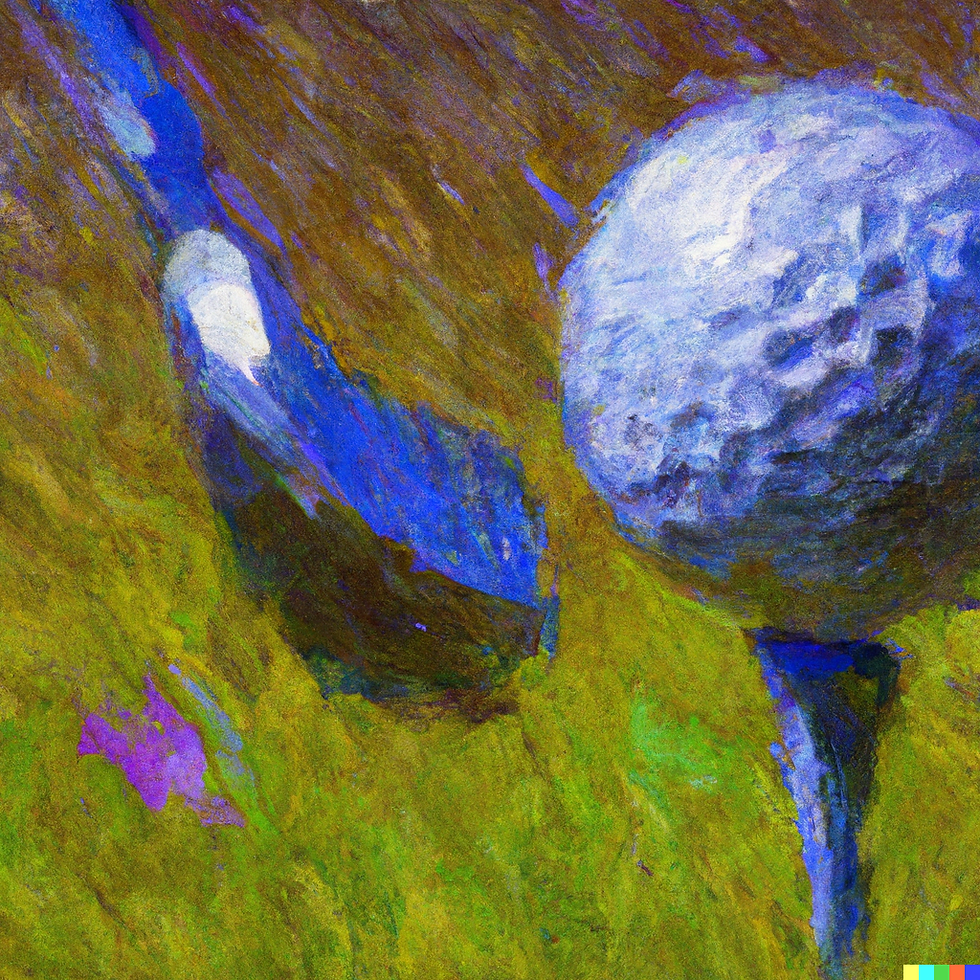The Impact of Equipment on Ball Flight: Physics of Golf Improvement
- Luke Fairways
- May 25, 2023
- 3 min read
Updated: May 27, 2023
Golf is a sport where the tiniest of details can have a profound impact on performance. Beyond the golfer's skill and technique, the equipment used can significantly influence the trajectory and behavior of the golf ball. From the design of the club and the characteristics of the golf ball to the choice of footwear, every aspect of golf equipment plays a role in determining ball flight.
In this essay, we will delve into the specifics of how golf equipment impacts ball flight, discussing the role of club design, ball construction, and even the influence of golf shoes on a golfer's swing.
The Role of Club Design
The design of a golf club is one of the most crucial factors affecting ball flight. Various aspects of a club, such as its loft, shaft length, clubhead design, and clubface groove pattern, all play a role in shaping the trajectory and behavior of a golf ball.
The loft of a club is the angle of the clubface relative to the vertical plane. Clubs with a higher loft (like a pitching wedge) will cause the ball to launch at a higher angle and generate more backspin, while clubs with a lower loft (like a driver) will produce a lower launch angle with less backspin.
The shaft length can influence the swing speed and the strike consistency. Longer shafts allow for a wider swing arc, potentially generating more clubhead speed, but they can also be harder to control and lead to less consistent ball striking.
Clubhead design, especially in drivers and fairway woods, can also significantly impact ball flight. Factors like the center of gravity location, the moment of inertia, and the flexibility of the clubface can influence the launch angle, spin rate, and even the ball's trajectory on off-center hits.
Clubface groove pattern, particularly in wedges, affects the ball's spin rate and thus its behavior on the greens. Deeper and sharper grooves can generate more spin, providing better control over the ball.
The Role of Ball Construction
In addition to the golf club, the construction and design of the golf ball also play a critical role in determining its flight. Factors like the ball's cover material, the design of its dimples, and the number of layers it has can influence the ball's trajectory, spin rate, and overall performance.
The cover material can affect the feel of the ball, its durability, and the spin rate. Balls with a urethane cover typically provide a softer feel and higher spin rates, making them popular among advanced players. Balls with Surlyn covers are usually more durable and provide lower spin rates, making them suitable for beginners and high-handicappers.
The design of the dimples on a golf ball affects its lift and drag characteristics. Dimples create turbulence in the layer of air around the ball, reducing drag and allowing the ball to fly further. Different dimple designs can lead to different flight characteristics. For instance, balls with deeper dimples tend to produce higher trajectories.
The number of layers in a golf ball can impact its behavior on different shots. Two-piece balls, which have a solid core and a cover, are durable and provide long distances, especially on drives. Multi-layer balls, which have additional layers between the core and the cover, offer more spin control on short shots and are preferred by more skilled players.
The Influence of Golf Shoes
While golf shoes might not directly affect the ball flight, they play a crucial role in ensuring a stable and balanced swing, which indirectly influences the trajectory and accuracy of the ball. Golf shoes with good grip help maintain stability during the swing, especially on wet or uneven surfaces. Some golf shoes also offer increased comfort and support, reducing fatigue and helping golfers maintain a consistent swing throughout their round.
In golf, equipment matters. The design of the clubs, the construction of the balls, and even the choice of shoes can significantly impact a golfer's performance, influencing the flight and behavior of the golf ball. By understanding these factors, golfers can make informed decisions about their equipment and optimize their performance on the course.




